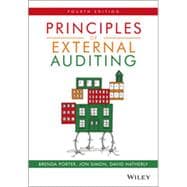Principles of External Auditing has become established as one of the leading textbooks for students studying auditing. Striking a careful balance between theory and practice, the book describes and explains, in non-technical language, the nature of the audit function and the principles of the audit process.
The book covers international auditing and accounting standards and relevant statute and case law. It explains the fundamental concepts of auditing and takes the reader through the various stages of the audit process. It also discusses topical aspects of auditing such as legal liability, audit risk, quality control, and the impact of information technology.
Brenda Porter is currently visiting Professor at Exeter University and Chulalongkorn University, Bangkok.








